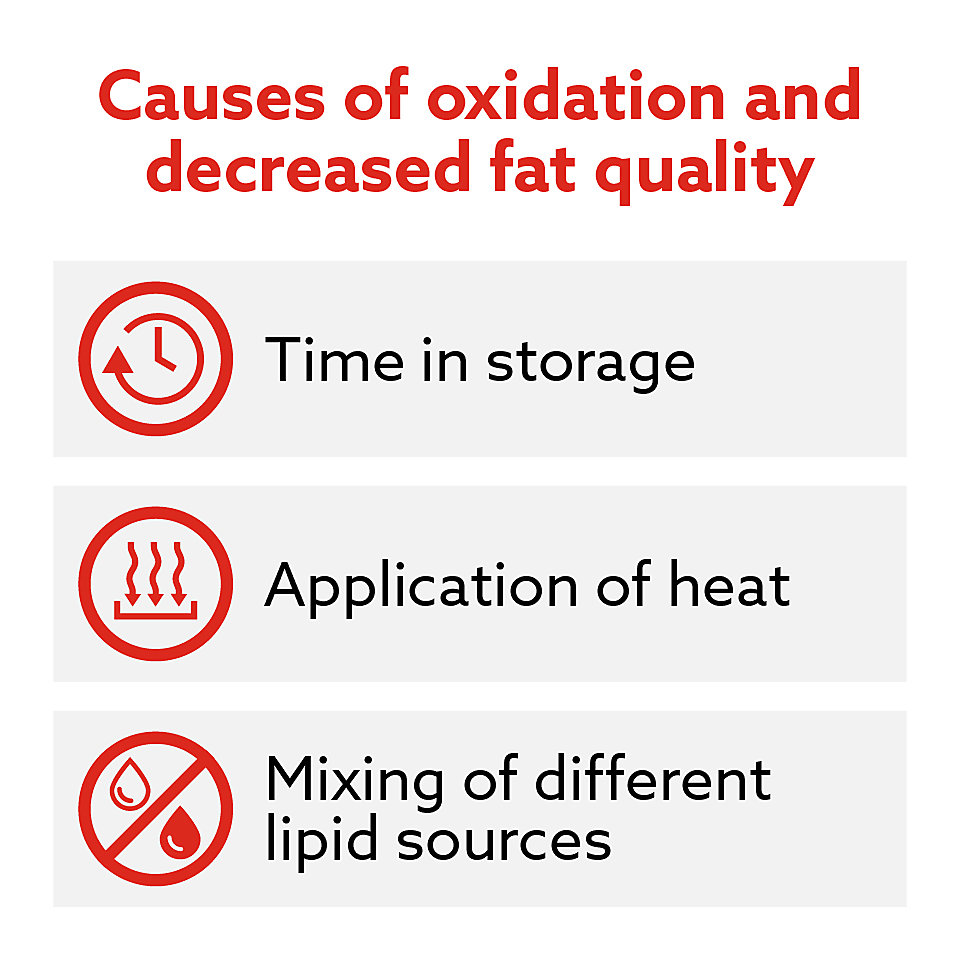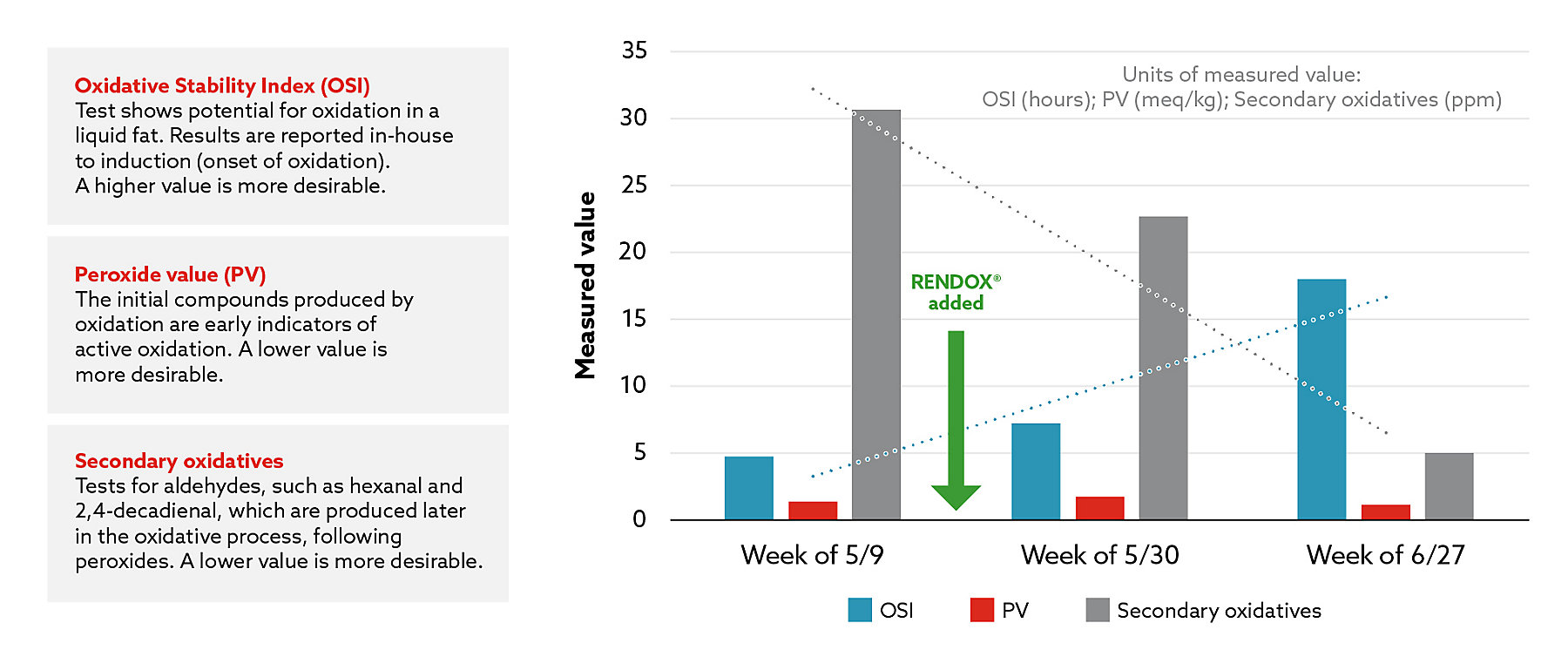To prevent oxidation, it’s important to know what causes it. Time in storage, application of heat, the mixing of different lipid sources, and the cleanliness or condition of your tank all affect fat quality and influence oxidation.
Read more: Learn how summer heat speeds up oxidation.
FAT TANK CONDITION AFFECTS FAT QUALITY
The condition of your fat tank and its effects on oxidation and fat quality are easy to overlook. All fats contain small amounts of sediment, which accumulate as “sludge” at the bottom of the fat tank. Over time, this sludge builds up and coats the inside of the tank. When new fat is added to the tank, the free radicals in this residue disperse and immediately trigger oxidation of the new fat. This process can reduce the value of even the highest-quality fat during storage in your fat tank.
HOW TO PROTECT THE QUALITY OF THE FAT IN YOUR FAT TANK
Follow these best practices to help ensure fat maintains its nutritional value while it’s being stored in your fat tank.




